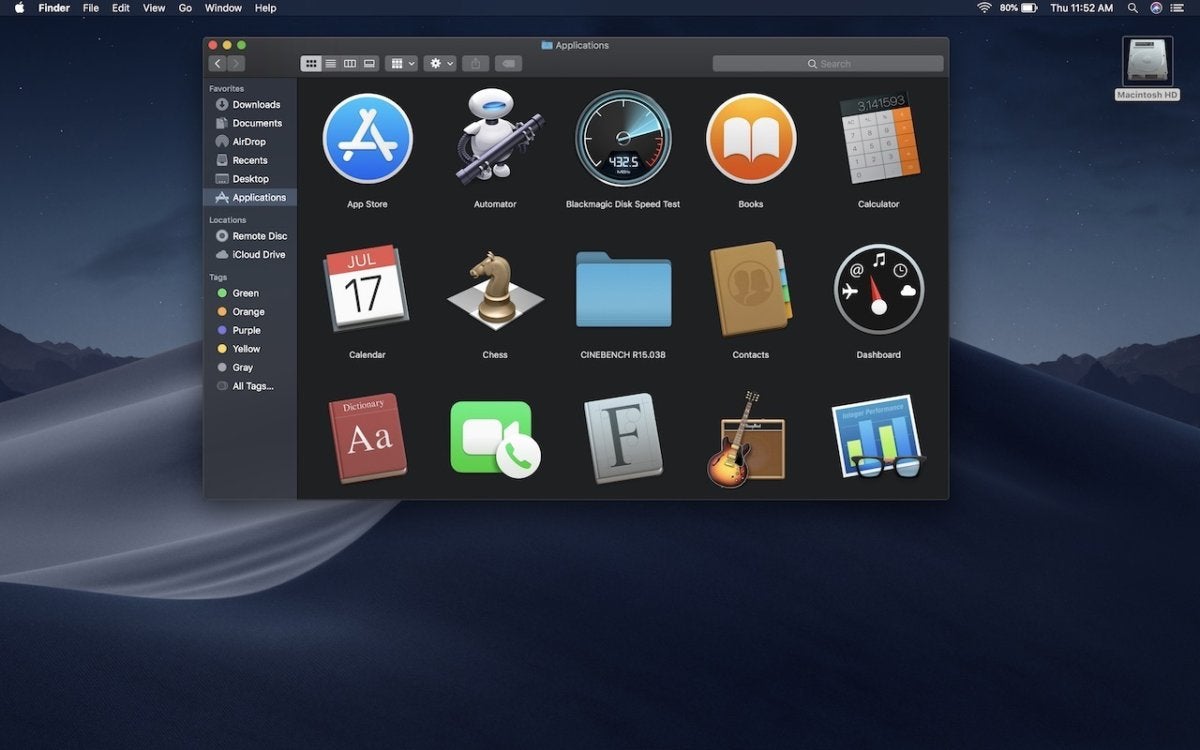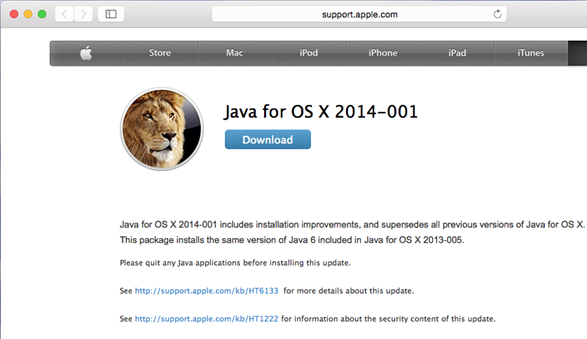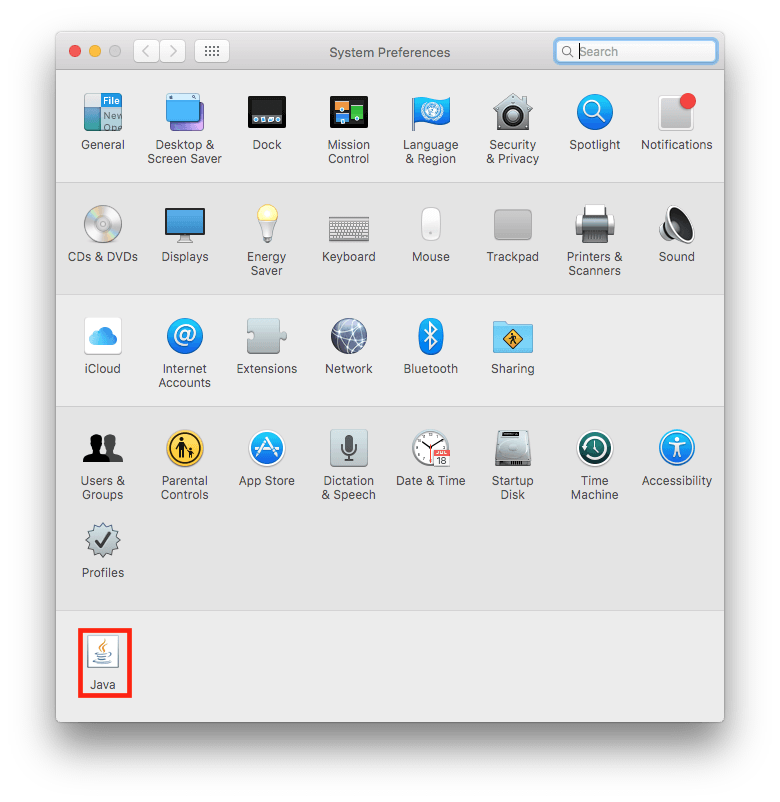Download Java for Windows Recommended Version 8 Update 281 (filesize: 1.98 MB) Release date January 19, 2021. Apple has released a pair of updates for running Java on Mac OS X 10.3 and 10.4 and also changed the way Macs handle US Daylight Savings Time. The update brings Apple's version of Java to 1.6.065, and is an update for OS X 10.7 or later. As with most updates for Java, this one addresses some known vulnerabilities in the runtime, and is.
Apple has rolled out Java for Mac OS X 10.6 Update 3 and Java for Mac OS X 10.5 Update 8, addressing several security issues in the Sun Microsystems-developed platform.
“Java for Mac OS X 10.6 Update 3 delivers improved compatibility, security, and reliability by updating Java SE 6 to 1.6.0_22,” Apple says.
On the Leopard side, “Java for Mac OS X 10.5 Update 8 delivers improved compatibility, security, and reliability by updating J2SE 5.0 to 1.5.0_26, and updating Java SE 6 to 1.6.0_22 for 64-bit capable Intel-based Macs.”
Apple notes that “J2SE 1.4.2 is no longer being updated to fix bugs or security issues and remains disabled by default in this update.”
A couple of Support documents are offered to explain exactly what security flaws the two updates address.
Affecting both the Client and the Server editions of Mac OS X 10.6.4, multiple vulnerabilities exist in Java 1.6.0_20, the most serious of which may allow an untrusted Java applet to execute arbitrary code outside the Java sandbox.
According to Apple, “Visiting a web page containing a maliciously crafted untrusted Java applet may lead to arbitrary code execution with the privileges of the current user.”
Java for Mac OS X 10.6 Update 3 addresses these issues by updating to Java version 1.6.0_22.
Apple also signals that a command injection issue exists in updateSharingD's handling of Mach RPC messages.
Because of this, “a local user may be able to execute arbitrary code with the privileges of another user who runs a Java application.”
To address this, Apple implemented a per-user Java shared archive, after being notified of this problem by a person identified as Dino Dai Zovi.

Additionally, the Mac maker notes that this particular issue only affects the Mac OS X implementation of Java.
Softpedia will have a closer look at al the vulnerabilities addressed in Java for Mac OS X in a separate article.
This topic includes the following sections:
System Requirements for Installing the JDK on macOS
The following are the system requirements for installing the JDK on macOS:
Any Intel-based computer running macOS. System update imac.
Administrator privileges.
You cannot install Java for a single user. Installing the JDK on macOS is performed on a systemwide basis for all users. Administrator privileges are required to install the JDK on macOS.

Determining the Default JDK Version on macOS
When starting a Java application through the command line, the system uses the default JDK.
You can determine which version of the JDK is the default by entering java -version in a Terminal window. If the installed version is 13 Interim 0, Update 0, and Patch 0, then you see a string that includes the text 13. For example:
To run a different version of Java, either specify the full path, or use the java_home tool. For example:
$ /usr/libexec/java_home -v 13 --exec javac -version
Installing the JDK on macOS
- Download the JDK
.dmgfile,jdk-13.interim.update.patch_osx-x64_bin.dmg.Before the file can be downloaded, you must accept the license agreement.
- From either the browser Downloads window or from the file browser, double-click the
.dmgfile to start it.A Finder window appears that contains an icon of an open box and the name of the.pkgfile. - Double-click the
JDK 13.pkgicon to start the installation application.The installation application displays the Introduction window. - Click Continue.
- Click Install. A window appears that displays the message: Installer is trying to install new software. Enter your password to allow this.
- Enter the Administrator user name and password and click Install Software.The software is installed and a confirmation window is displayed.
.dmg file if you want to save disk space. 
Uninstalling the JDK on macOS
You must have Administrator privileges.Note:
Do not attempt to uninstall Java by removing the Java tools from /usr/bin. This directory is part of the system software and any changes will be reset by Apple the next time that you perform an update of the OS.
- Go to
/Library/Java/JavaVirtualMachines. - Remove the directory whose name matches the following format by executing the
rmcommand as a root user or by using thesudotool:/Library/Java/JavaVirtualMachines/jdk-13.interim.update.patch.jdkFor example, to uninstall 13 Interim 0 Update 0 Patch 0:
$ rm -rf jdk-13.jdk
Installation FAQ on macOS Platform
This topic provides answers for the following frequently asked questions about installing JDK on macOS computers.
1. How do I find out which version of Java is the system default?
When you run a Java application from the command line, it uses the default JDK. If you do not develop Java applications, then you do not need to worry about this. Imac 27 mid 2011 latest os. See Determining the Default JDK Version on macOS.
Java Apple Software Update

2. How do I uninstall Java?
See Uninstalling the JDK on macOS.
3. After installing Java for macOS 2012-006, can I continue to use Apple's Java 6 alongside the macOS JDK for Java 13?
If you want to continue to develop with Java 6 using command-line, then you can modify the startup script for your favorite command environment. For bash, use this:
Apple Java Update Windows 10
$ export JAVA_HOME=`/usr/libexec/java_home -v 13`
Some applications use /usr/bin/java to call Java. After installing Java for macOS 2012-006, /usr/bin/java will find the newest JDK installed, and will use that for all of the Java-related command-line tools in /usr/bin. You may need to modify those applications to find Java 6, or contact the developer for a newer version of the application.
Apple Mac Java Update
4. What happened to the Java Preferences app in Application Utilities?
Apple Java Update Version
The Java Preferences app was part of the Apple Java installation and is not used by Oracle Java. Therefore, macOS releases from Apple that do not include Apple Java will not include Java Preferences.
